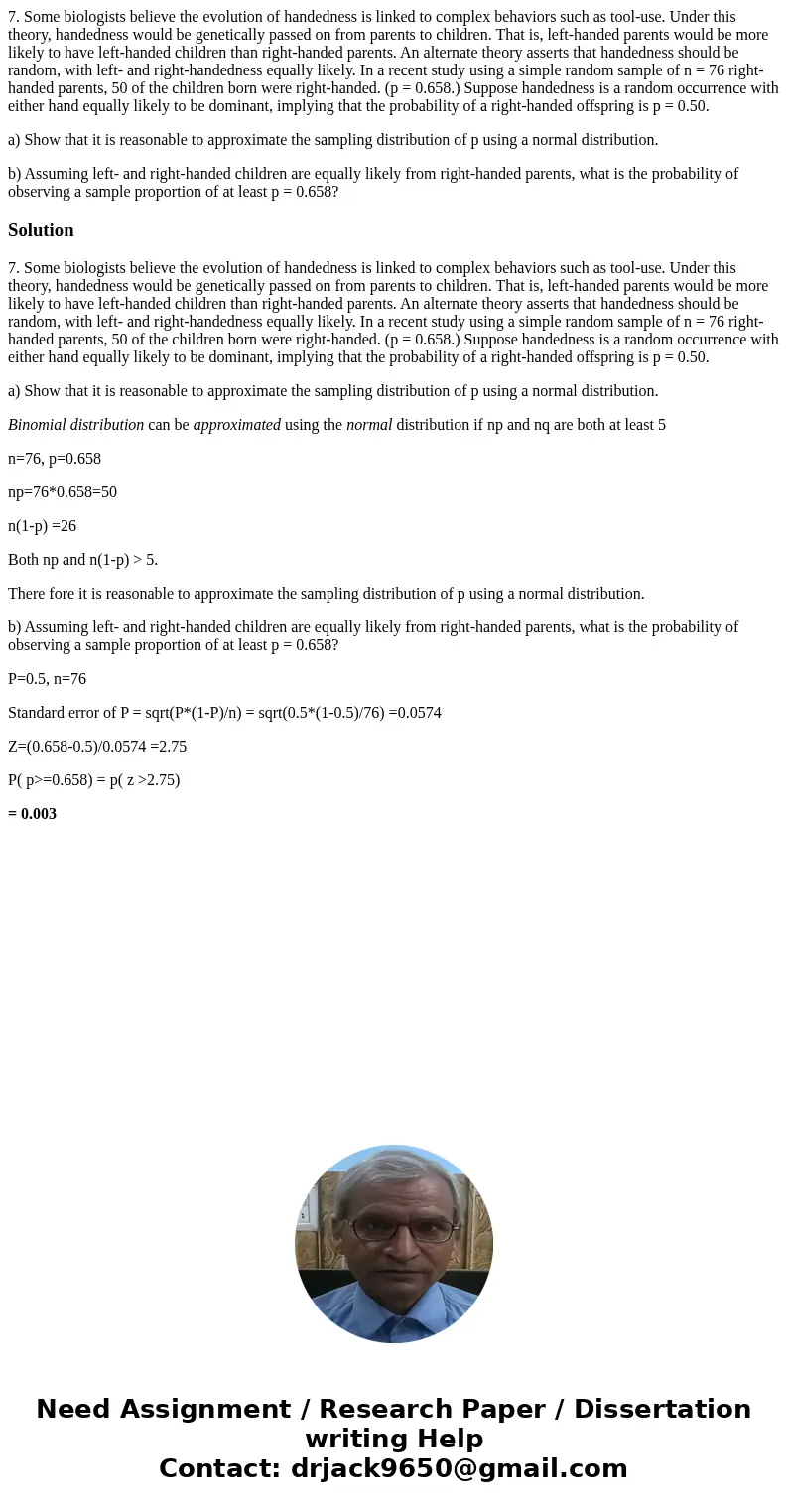7 Some biologists believe the evolution of handedness is lin
7. Some biologists believe the evolution of handedness is linked to complex behaviors such as tool-use. Under this theory, handedness would be genetically passed on from parents to children. That is, left-handed parents would be more likely to have left-handed children than right-handed parents. An alternate theory asserts that handedness should be random, with left- and right-handedness equally likely. In a recent study using a simple random sample of n = 76 right-handed parents, 50 of the children born were right-handed. (p = 0.658.) Suppose handedness is a random occurrence with either hand equally likely to be dominant, implying that the probability of a right-handed offspring is p = 0.50.
a) Show that it is reasonable to approximate the sampling distribution of p using a normal distribution.
b) Assuming left- and right-handed children are equally likely from right-handed parents, what is the probability of observing a sample proportion of at least p = 0.658?
Solution
7. Some biologists believe the evolution of handedness is linked to complex behaviors such as tool-use. Under this theory, handedness would be genetically passed on from parents to children. That is, left-handed parents would be more likely to have left-handed children than right-handed parents. An alternate theory asserts that handedness should be random, with left- and right-handedness equally likely. In a recent study using a simple random sample of n = 76 right-handed parents, 50 of the children born were right-handed. (p = 0.658.) Suppose handedness is a random occurrence with either hand equally likely to be dominant, implying that the probability of a right-handed offspring is p = 0.50.
a) Show that it is reasonable to approximate the sampling distribution of p using a normal distribution.
Binomial distribution can be approximated using the normal distribution if np and nq are both at least 5
n=76, p=0.658
np=76*0.658=50
n(1-p) =26
Both np and n(1-p) > 5.
There fore it is reasonable to approximate the sampling distribution of p using a normal distribution.
b) Assuming left- and right-handed children are equally likely from right-handed parents, what is the probability of observing a sample proportion of at least p = 0.658?
P=0.5, n=76
Standard error of P = sqrt(P*(1-P)/n) = sqrt(0.5*(1-0.5)/76) =0.0574
Z=(0.658-0.5)/0.0574 =2.75
P( p>=0.658) = p( z >2.75)
= 0.003

 Homework Sourse
Homework Sourse